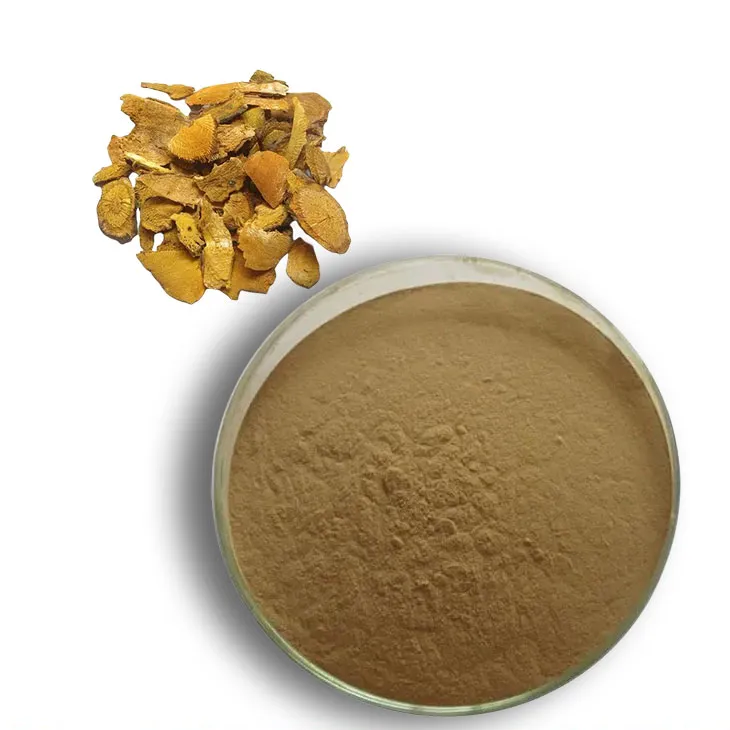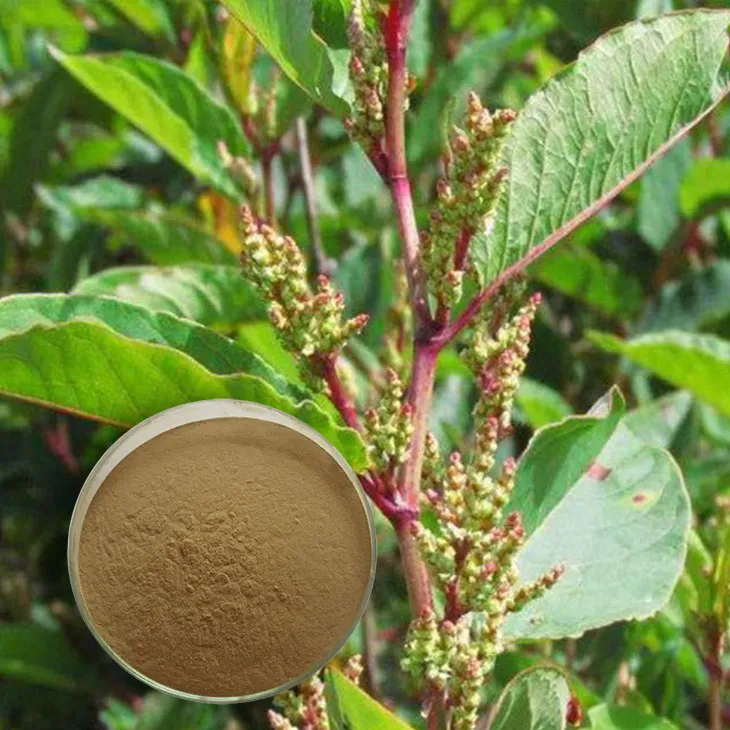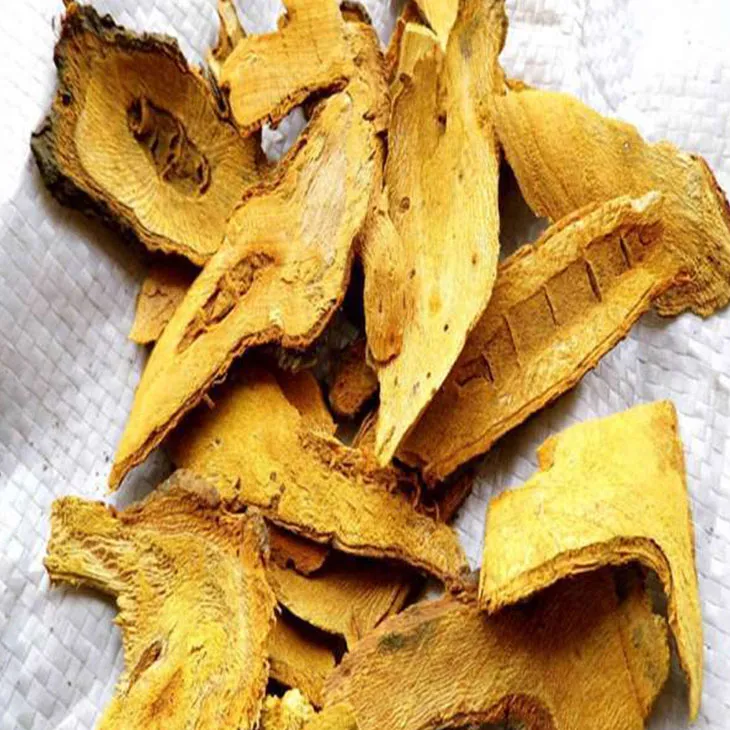- 0086-571-85302990
- sales@greenskybio.com
How to make powder from polygonum cuspidatum extract?
2024-11-28

1. Introduction
Polygonum cuspidatum, also known as giant knotweed, has been used in traditional medicine for various purposes. Extracting and converting its extract into powder can enhance its usability and preservation. This article will guide you through the entire process, from the selection of suitable Polygonum cuspidatum to quality control of the final powder product.

2. Selection of Polygonum Cuspidatum
2.1. Source
- It is crucial to obtain Polygonum cuspidatum from a reliable source. This can be either wild - harvested or cultivated. However, when wild - harvesting, ensure that it is legal and sustainable, following local regulations to avoid over - harvesting.
- Cultivated Polygonum cuspidatum may offer more consistent quality as it can be grown under controlled conditions, such as proper soil, sunlight, and watering regimes.
- Look for healthy plants. The stems should be firm and free from signs of disease or pest infestation. For example, the presence of holes in the stems may indicate pest damage.
- The leaves should be green and vibrant. Yellowing or wilting leaves may suggest a sub - optimal plant condition.

3. Extraction Methods
3.1. Solvent Extraction
-
Choice of Solvent
- Common solvents used for extracting Polygonum cuspidatum include ethanol and water. Ethanol is often preferred as it can extract a wide range of active compounds effectively.
- When using ethanol, it is important to ensure that the ethanol concentration is appropriate. A concentration of around 70% - 80% ethanol has been found to be effective in many cases.
-
Extraction Process
- First, chop the Polygonum cuspidatum into small pieces. This increases the surface area available for extraction.
- Next, place the chopped plant material in a suitable container. Add the solvent in a ratio that is typically around 1:5 - 1:10 (plant material to solvent).
- Seal the container and let it stand for a period of time. This can range from a few days to a few weeks, depending on the desired extraction efficiency. Stirring the mixture occasionally can improve the extraction process.
- After the extraction period, filter the mixture to separate the liquid extract from the solid plant residue. This can be done using filter paper or a filtration apparatus.
-
Principle
- Supercritical fluid extraction uses a supercritical fluid, often carbon dioxide (CO₂), as the extracting agent. CO₂ is in a supercritical state when it is above its critical temperature and pressure. In this state, it has properties of both a gas and a liquid, which allows it to penetrate the plant material and extract compounds effectively.
-
Advantages
- One of the main advantages is that it is a clean extraction method. Since CO₂ is a non - toxic, non - flammable gas, there are no solvent residues left in the extract, which is important for applications in the pharmaceutical and food industries.
- It also allows for more selective extraction. By adjusting the pressure and temperature, different compounds can be preferentially extracted.
-
Process
- The Polygonum cuspidatum is first prepared in a similar way as for solvent extraction, by chopping it into small pieces.
- The plant material is then placed in the extraction chamber of a supercritical fluid extraction device. CO₂ is introduced into the chamber and brought to the supercritical state by adjusting the pressure and temperature.
- The supercritical CO₂ extracts the desired compounds from the plant material and is then passed through a separator. By reducing the pressure, the CO₂ reverts to a gaseous state, leaving the extract behind.

4. Conversion of Extract into Powder
4.1. Evaporation
- If the extract obtained from the previous extraction methods is in a liquid form, evaporation can be used to remove the solvent and obtain a concentrated extract. This can be done using a rotary evaporator for small - scale operations or a large - scale evaporator in industrial settings.
- The temperature and pressure during evaporation need to be carefully controlled. High temperatures may cause degradation of some active compounds, so it is advisable to use a gentle vacuum and a relatively low temperature, depending on the nature of the solvent.
-
Principle
- Spray drying is a commonly used method for converting liquid extracts into powder. The liquid extract is sprayed into a hot drying chamber through a nozzle. As the droplets come into contact with the hot air, the solvent evaporates rapidly, leaving behind solid particles of the extract in powder form.
-
Parameters
- The inlet and outlet temperatures of the drying chamber are important parameters. The inlet temperature is usually set between 150 - 200°C, while the outlet temperature should be around 80 - 100°C. These temperatures can be adjusted according to the characteristics of the extract.
- The flow rate of the liquid extract and the air also affects the quality of the final powder. A proper balance needs to be maintained to ensure uniform drying and formation of fine powder particles.
-
Advantages
- Spray drying can produce a fine powder with good flowability and solubility. This makes it suitable for various applications, such as in the formulation of dietary supplements or pharmaceuticals.
-
Principle
- Freeze drying, also known as lyophilization, involves freezing the liquid extract first. Then, under a vacuum, the ice is sublimated directly from the solid state to the gaseous state, leaving behind a dry powder.
-
Benefits
- This method is particularly suitable for heat - sensitive compounds. Since the drying process occurs at low temperatures, there is less risk of degradation of active compounds compared to other drying methods.
- The resulting powder has a porous structure, which can enhance its solubility and rehydration properties.
-
Procedure
- Freeze the liquid extract at a very low temperature, typically - 40°C to - 80°C.
- Place the frozen sample in a freeze - drying chamber and apply a vacuum. The sublimation process can take several hours to days, depending on the volume of the sample.
5. Quality Control
5.1. Identification of Compounds
- Use techniques such as high - performance liquid chromatography (HPLC) or gas chromatography - mass spectrometry (GC - MS) to identify and quantify the active compounds in the Polygonum cuspidatum powder. This ensures that the powder contains the expected bioactive components.
- Comparing the chromatograms or spectra of the powder with those of a standard reference can help in determining the purity and authenticity of the product.
- Check for the presence of impurities, such as residual solvents, heavy metals, and pesticides. Residual solvents can be determined using methods like headspace - gas chromatography.
- Heavy metals such as lead, mercury, and cadmium can be detected by atomic absorption spectrometry or inductively coupled plasma - mass spectrometry (ICP - MS). Pesticide residues can be analyzed using gas chromatography or liquid chromatography - tandem mass spectrometry (LC - MS/MS).
- Conduct microbiological tests to check for the presence of bacteria, fungi, and yeasts. Total aerobic microbial count, total yeast and mold count, and tests for specific pathogens such as Escherichia coli and Salmonella should be carried out.
- These tests ensure that the powder is safe for consumption or use in pharmaceutical and cosmetic applications.
6. Possible Uses of Polygonum Cuspidatum Powder
6.1. In Traditional Medicine
- Polygonum cuspidatum has a long history of use in traditional Chinese medicine. The powder can be formulated into herbal remedies for various ailments, such as inflammation, liver disorders, and joint pain.
- It may be used in the form of capsules, tablets, or as an ingredient in herbal teas.
- Research has shown that Polygonum cuspidatum contains bioactive compounds with potential pharmaceutical properties. The powder can be further processed to isolate and purify these compounds for use in drug development.
- For example, some compounds may have antioxidant, anti - cancer, or anti - microbial activities that can be explored for the development of new drugs.
- The antioxidant properties of Polygonum cuspidatum make it a suitable ingredient in cosmetic products. The powder can be added to creams, lotions, and serums to protect the skin from oxidative damage.
- It may also have anti - aging properties, helping to reduce wrinkles and improve skin elasticity.
- As a dietary supplement, Polygonum cuspidatum powder can be added to functional foods. It can provide health benefits such as improving digestion or boosting the immune system.
- However, proper safety evaluations and regulatory compliance are required before its use in food products.
7. Conclusion
Making powder from Polygonum Cuspidatum Extract involves several steps, from the careful selection of the plant to the extraction of its active compounds and the conversion of the extract into powder. Quality control is essential to ensure the safety and effectiveness of the final product. With proper processing, Polygonum cuspidatum powder can have various applications in traditional medicine, pharmaceuticals, cosmetics, and the food industry.
FAQ:
Question 1: What are the criteria for selecting suitable Polygonum cuspidatum?
When selecting Polygonum cuspidatum, several factors should be considered. Firstly, it should be free from diseases and pests. Healthy plants usually ensure better quality of the extract. Secondly, the maturity of the plant matters. Appropriate maturity can influence the content of active ingredients. Additionally, the growth environment is also crucial. Plants grown in unpolluted and suitable ecological environments are more likely to produce high - quality raw materials for extraction.
Question 2: What are the common extraction methods for Polygonum cuspidatum?
There are several common extraction methods for Polygonum cuspidatum. One is the solvent extraction method, such as using ethanol or water as solvents. Ethanol extraction can effectively extract many active ingredients. Another method is supercritical fluid extraction, which has the advantages of high efficiency and selectivity. Maceration extraction is also a traditional method, where the plant material is soaked in a solvent for a certain period to extract the desired components.
Question 3: How to ensure the quality during the process of making powder from Polygonum Cuspidatum Extract?
To ensure quality during the powder - making process, strict quality control measures are required. Firstly, the quality of the raw Polygonum cuspidatum should be monitored. This includes testing for contaminants and ensuring the correct species. During extraction, parameters such as temperature, pressure (in case of certain extraction methods), and extraction time should be carefully controlled to ensure consistent extraction efficiency. After extraction, purification steps may be necessary to remove impurities. And during the powder - making process, proper drying techniques should be used to prevent moisture retention and ensure the powder's stability and quality.
Question 4: What are the possible uses of Polygonum Cuspidatum Extract powder?
Polygonum cuspidatum extract powder has various possible uses. In the field of medicine, it may be used for its potential antioxidant, anti - inflammatory, and antimicrobial properties. It could potentially be used in the development of drugs or dietary supplements. In the cosmetic industry, it may be added to products for its skin - beneficial properties, such as anti - aging effects. Additionally, in some traditional medicine systems, it may be used for treating certain ailments like rheumatism.
Question 5: Can the powder - making process affect the bioactivity of Polygonum cuspidatum extract?
The powder - making process can potentially affect the bioactivity of the extract. For example, if high temperatures are used during drying, some heat - sensitive active ingredients may be degraded, thus reducing bioactivity. Improper storage conditions of the powder can also lead to a decrease in bioactivity over time. However, if proper techniques such as low - temperature drying and appropriate packaging are used, the impact on bioactivity can be minimized.
Related literature
- Extraction and Characterization of Active Compounds from Polygonum cuspidatum"
- "The Potential Health Benefits of Polygonum cuspidatum Extracts in Modern Medicine"
- "Optimization of Powder - making Process for Herbal Extracts: A Case Study of Polygonum cuspidatum"
- ▶ Hesperidin
- ▶ citrus bioflavonoids
- ▶ plant extract
- ▶ lycopene
- ▶ Diosmin
- ▶ Grape seed extract
- ▶ Sea buckthorn Juice Powder
- ▶ Beetroot powder
- ▶ Hops Extract
- ▶ Artichoke Extract
- ▶ Reishi mushroom extract
- ▶ Astaxanthin
- ▶ Green Tea Extract
- ▶ Curcumin Extract
- ▶ Horse Chestnut Extract
- ▶ Other Problems
- ▶ Boswellia Serrata Extract
- ▶ Resveratrol Extract
- ▶ Marigold Extract
- ▶ Grape Leaf Extract
- ▶ blog3
- ▶ blog4
-
Lycopene Manufacturers from China.
2024-11-28
-
Organic plantain extract powder factory.
2024-11-28
-
The best calendula extract on the market.
2024-11-28
-
100% Organic Baicalin.
2024-11-28
-
Chinese Cocoa Extract Powder Manufacturers
2024-11-28
-
Chinese peppermint oil powder manufacturers.
2024-11-28
-
Hericium erinaceus extract powder
2024-11-28
-
Sophora Flavescens Root Extract
2024-11-28
-
Europen Bilberry Extract
2024-11-28
-
Tongkat Ali Extract Powder
2024-11-28
-
Oyster Mushroom Extract Powder
2024-11-28
-
Red Wine Extract
2024-11-28
-
Citrus bioflavonoids
2024-11-28
-
Licorice Root Extract Powder
2024-11-28
-
Calendula Extract
2024-11-28
-
Tormentil Extract
2024-11-28





















